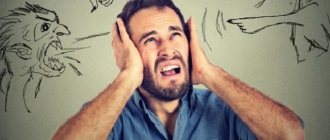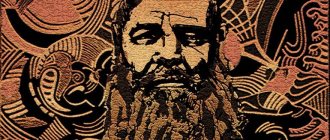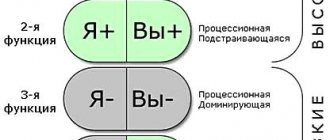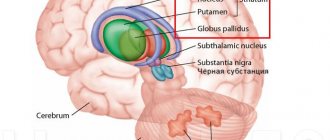Author: Oleg Maltsev
According to medical reference books, hallucinations are a mental disorder, the basis of which is an incorrect or distorted perception of feelings and ideas about the world around us. But there are times when visions arise in a group of people at once. In this article we will talk about collective hallucinations, what causes them and in what cases this happens.
Definition of hallucinations
A hallucination is an image that appears in consciousness in the absence of an external stimulus to the senses and is qualitatively similar to the actually perceived object. A hallucination is perceived by a person as if it were a real object that has arisen in the outside world, and can be caused by a wide variety of reasons. For example, organic brain lesions, affective and dissociative disorders, schizophrenia. Very rarely, hallucinations can occur in healthy people (with severe fatigue, as well as when falling asleep or waking up) [2].
Collective hallucinations are a completely different topic. It is obvious that organic pathologies in a group of people that manifest themselves in exactly the same way are excluded; It is also unlikely that everyone who experiences a mass hallucination has schizophrenia. What are the objective reasons for this phenomenon?
Therapeutic measures
Therapeutic measures depend on the diagnosis given to the patient. Possible reasons include:
- mental disorders (personality disorder, schizophrenia, bipolar disorder, post-traumatic syndrome, psychotic depression);
- physiology (central nervous system injuries, Parkinson's disease, epilepsy, brain tumor);
- some infectious pathologies (infections of the lungs, bladder, brain, and other internal organs);
- use of chemical substances in large doses (nicotine, ethyl alcohol, illegal drugs).
Once the root cause is determined, the doctor draws up a course of therapy. Most often, antipsychotic drugs or antipsychotics are used to combat non-existent images. They block a number of dopamine receptors in specific areas of the brain, which helps reduce hallucinations. But antipsychotics do not always cope with the task. About 30% of patients continue to hear, see or experience images.
There are many non-pharmacological intervention options. Their effectiveness remains in question, but doctors still cannot find a quality alternative. One type of non-pharmacological intervention is cognitive behavioral therapy. It includes regular visits to a psychotherapist, who changes the patient’s attitude towards the problem. The therapist tries to eradicate the unpleasant/painful experience and get the patient to come to terms with the voices or visions in their own head. It should be understood that a complete cure through CBT is impossible; only a reduction in symptoms can be achieved.
Don't try to get rid of hallucinations on your own. Be sure to consult a doctor, go to group classes with people with a similar diagnosis, regularly visit a psychotherapist and remember that only you can control your own body and mind.
Possible causes of mass hallucinations
- V. M. Bekhterev names the same moods and ideas of the same kind prevailing in the minds of people as a favorable condition for the development of mass hallucinations. And let us again recall the above-described incident with the image of Madonna - exhausted and exhausted, people were in equally stressful conditions and, one can assume, their thoughts and moods largely converged. In addition, the inhabitants of that village were very religious. They, one might say, needed to believe in something - and that’s how the Madonna of the Chapel arose.
The story of the frigate Belle-Poule and the corvette Berceau, French warships that were caught in a storm at sea near the Compound Islands in 1846, is also known. At some point, the frigate lost sight of the corvette. “Berceau” was not even at the appointed place for the meeting. The crew of the Belle-Poule had to wait a whole month for any news about their comrades - in anxiety and complete uncertainty. All conversations and thoughts inevitably came down to the missing ship. Until one afternoon the signalman reported that he saw, judging by the outlines, a ship without masts, drifting off the coast.
After a month of uncertainty, this vague description was enough to make people think of a corvette. The excitement and anxiety that had been accumulating for a whole month reached its peak in those hours. A cruiser in the roadstead urgently went to the corvette to help and saw, instead of a ship, boats towing a raft with people. The tension grew as more and more frightening details about the people on the raft were revealed. The sailors on the cruiser even heard the pleas and cries of those who had survived on the raft, drowned out by the waves. However, as they swam closer, they saw only trees torn from the shore during the storm. There were no boats, rafts or people there.
- Conformity is a person’s compliance with real or imagined group pressure, manifested in a change in his behavior and attitudes in accordance with the position of the majority that was not initially shared by him [10]. Conformity is not always a bad thing, because it is what helps us internalize social norms and laws. In the case of mass hallucinations, conformity works as a reluctance and even fear of standing out if one doubts the existence of things and phenomena visible to the majority.
- A high degree of suggestibility is the subject’s tendency to involuntary compliance with the influences of other people, their advice, instructions, even if they contradict his own beliefs and interests. As we understand, suggestible people themselves much more easily adopt the mood of others, become infected by their views and habits, as well as by errors of perception.
Suggestibility is affected by:
- type of nervous system;
- low self-esteem;
- unwillingness or inability to take responsibility;
- gullibility;
- superstition and faith;
- dreaminess, tendency to fantasize;
- instability of beliefs, lack of critical thinking [4].
However, suggestibility can manifest itself situationally, depending on a number of external and internal factors - for example, an unstable emotional state [3].
- Tense atmosphere, increased emotionality of people. In particular, this factor provoked the collective hallucination with a raft described above. Long tense waiting and growing concern for the crew of the corvette were the general conditions that became the basis for the emergence and spread of mass hallucination.
Also in 1897, the German psychologist Edmund Parish described a mass hallucination that occurred on a ship. This happened after the sudden death of the cook, which struck many passengers. His body, according to maritime custom, was lowered into the water and that same night several people saw a ghost, characteristically limping on one leg. The next morning, after mass alarms, it turned out that it was just a fragment of a ship, rocking on the waves. Thus, an emotionally intense day created conditions for increasing the suggestibility of passengers [5].
- Perceptual attitude is the readiness to react in a certain way (impartially or biased) to stimulation organized in a certain way [7]. Consequently, a person who has one or another perceptual attitude will be ready to perceive something in a certain way - and, of course, with a high degree of probability he will see exactly what he expects. V. M. Bekhterev described a case of religious mass hallucination from the words of the doctor M. I. Nikitin. At the bottom of the well, many believers saw the face of the deity they worshiped; some even thought that the image was moving and waving its hand at them. This incident had a very inspiring effect on them, until a woman approached the well, who knew nothing about what she “should” see in the water. When the woman said that she saw only stones at the bottom of the well, the mass hallucination dissipated.
This mechanism was mentioned with a touch of irony by W. Shakespeare in the play “Hamlet”:
"Hamlet. Do you see that cloud over there, almost like a camel? Polonium. By God, it really looks like a camel. Hamlet. But, in my opinion, it looks like a swallow. Polonium. He has a back like a swallow. Hamlet. Or like a whale? Polonium. Just like a whale.” [8, p. 89]
- Altered state of consciousness. For example, in the practice of some religious organizations of a destructive nature, psychoactive substances (drugs, alcohol, hallucinogens) are used to instill collective hallucinations, as noted by T. K. Mukhina, candidate of pedagogical sciences [9].
Impact of extreme situations
Any critical situation, especially one associated with a risk to life, always contributes to the emergence of a number of group mental reactions.
One of the stories says that during a sea voyage on a ship, a cook died. According to maritime traditions, his body was given to the sea, and the very next night after his death, several passengers saw the body of the deceased walking along the waves after the ship. This provoked panic on board, but in the morning they found a board tied to the railing. It was this board that the vacationers mistook for the body of the cook. This event well characterizes hallucinations caused by a strong emotional state caused by common and identical experiences in the marine environment.
Newspapers and the Internet often described cases where a group of children and teenagers, walking through abandoned construction sites and buildings, ran out of there because of the horror in the form of a ghost pursuing them in the form of a watchman or a dead person. There is also a known case when a rescue team carried out an operation to extract a small child from a car that had overturned into the water, and at the same time heard women’s cries for help and rescue.
The Mandela effect and mass hallucinations
The Mandela effect (false memories) is notable because there is not a single serious study on it yet. However, as soon as he appeared, he managed to attract attention to himself. The effect is named after South African President Nelson Mandela, after whose death in 2013 thousands of people around the world were very surprised. According to their recollections, Mandela died back in the 80s of the last century, after being tortured in prison - and they are confident in the correctness of their memories.
However, in addition to the “inconsistency” with the real date of death of the President of South Africa, many others were soon found: Nutella chocolate spread, contrary to people’s testimonies, was never two-color; the logos of the Ford and Volkswagen car brands look a little different from theirs. Many people remembered. Even Rodin’s famous sculpture “The Thinker” did not correspond to the memories - the person depicted in the sculpture does not support his forehead with his fist, but his chin with the back of his hand.
The search for the most popular memories, which differ from objective reality, has excited many so much that conversations about them do not subside to this day, and those who are enthusiastic have accumulated a whole list of “wrong” memories. However, the Mandela effect, in essence, is very similar to a mass hallucination and develops approximately according to the same scenario - people experiencing the effect themselves most likely simply join in the mass discussion and exchange of impressions and pick up the general wave of ideas, endowed with a degree of mystery. We will tell you more about the Mandela effect in one of the following articles.
Mirror neurons and their role in the manifestation of mass hallucinations
Professor of Psychiatry and Neuroscience Marco Iacoboni is one of the first researchers to study and describe mirror neurons. Although this sensational topic is still full of mysteries and blind spots, Iacoboni notes that mirror neurons “lie at the core of our navigation system. They connect us with each other mentally and spiritually” [11, p. 144]. In other words, scientists may have found the key to our empathy, imitation of other people’s behavior (and, therefore, learning) [12].
The activity of mirror neurons was consistent with the activity of the frontal, temporal and parietal regions of the brain - and some neurons were active not only during execution, but also during observation of the action. According to Iacoboni, disturbances in the functioning of mirror neurons correlate with the manifestation of autism spectrum disorders [11].
The mechanism of imitation, in particular, lies in the manifestation of collective hallucinations. Consequently, the main direction of work in this area should be considered the research and establishment of the exact functions of mirror neurons, their development in onto- and phylogenesis, and their role in human socialization. However, the discovery of mirror neurons is already called one of the most important in the last ten years and the most promising area of research.
So, mass hallucinations are a phenomenon of unconditional interest for researchers, as well as for lovers of mysticism. This is a phenomenon, the very basis of which will always be conformity, a certain attitude of perception, reduced criticality in relation to what is seen, and often an unstable emotional background. But the main thing is people’s willingness to believe, not only their own eyes, but also the eyes of another person, in order to be involved in something amazing. As psychologist D. Rockliffe wrote: “Where there is faith in miracles, there will always be evidence of their existence. […] Faith produces hallucinations, and hallucinations confirm belief” [6, p. 436].
Treatment
Treatment of hallucinations is based on eliminating the causative factor that provoked their appearance. In addition, in addition to therapy aimed at eliminating the causative factor, medicinal relief of hallucinations with psychotropic drugs is carried out. Antipsychotics are most effective for relieving hallucinations (for example, Olanzapine, Amisulpride, Risperidone, Quetiapine, Mazeptil, Trisedyl, Haloperidol, Triftazin, Aminazine, etc.). The choice of a specific drug to relieve hallucinations is made by the doctor in each case individually, based on the characteristics of the patient, the combination of hallucinations with other symptoms of a mental disorder, previously used therapy, etc.











